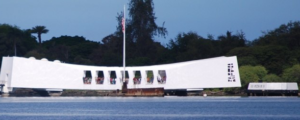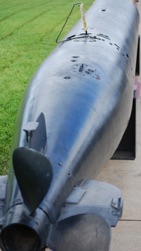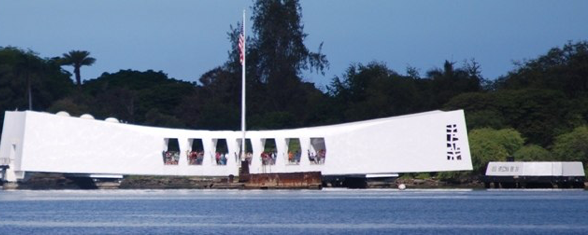Tuesday, June 09, 2009

East Coast time was still playing tricks with me at 3:30AM this morning so I grabbed the laptop and started planning a day trip to Pearl Harbor. By 6:30AM, I was boarding The Bus (Oahu’s mass transit system) for a trip to the Memorial. By 7:00AM, I was exiting the “wrong” Bus and boarding the “right” Bus. I love mass transit but sometimes I forget to cross the street to catch the bus that’s going in the direction I’m traveling… oops! (I ended up in Queens, New York once by making this mistake on the New York subway system, but that’s another story.)
I arrived at the Memorial and immediately noticed the age range gathering at the entrance; grandkids and kids as young as 8 to parents and grandparents beyond their 80s. As a baby boomer of parents who lived through World War II, I have always been fascinated with its history. My dad’s combat experience took place during the Middle Eastern/Mediterranean Campaign, beginning in Northern Africa and ending in Italy. He was very reluctant to share his WWII experiences so my brothers and I continue to feed our curiosity whenever a chance arises. I reviewed the history of the December 7 attack on Pearl Harbor and found the National Park Service Pearl Harbor website very helpful. The photo gallery has excellent photos of the USS Arizona resting peacefully in its watery grave beneath the memorial. What’s missing from the photographs is the atmosphere of humility, honor, and respect that fills every water and air molecule surrounding the Memorial.
Today was a day to reflect on the beginning of the war in the Pacific. During my time at Midway, my cohorts and I will have an opportunity to reflect on the turning point in the Pacific front: the Battle of Midway.

Review Topic: Technological History
Torpedos are a devastating weapon and were used successfully by our allies and axis forces during World War II. Technological advances since the 1800s has continued to improve this submersible arsenal. The primary torpedo used by the US during WWII was powered by steam and referred to as the Mark-14 (shown in the photo at the right). Follow the link below to learn about the history of torpedos and how changes in technology have led to innovative designs which improve accuracy and safety. If you’re a history buff, you’ll probably enjoy savoring over the lengthy document. If not, scroll through the images to observe the technology illustrated in the “Spar torpedo,” used in 1864 to sink the CSS Albemarle at Plymouth, NC, through the “ASROC Missile” of today that includes a homing system.
Follow the link below to investigate the history of torpedos: 

